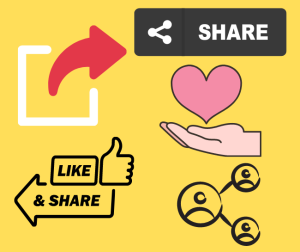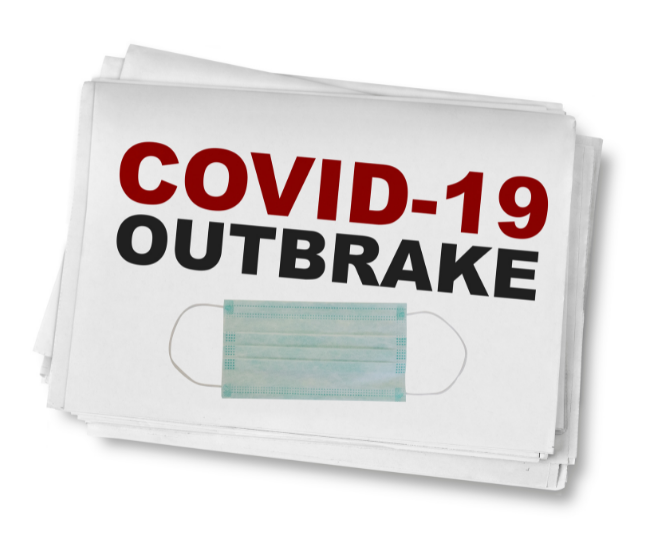10 Tips to Create Web Content That Drives Conversions

If you want your website to be successful, then you need to create content that drives conversions. This means making content that is engaging and persuasive. In this blog post, we will talk about how to identify content that converts, how to create one that converts and the four steps in creating valuable web content. We will also share ten tips to create web content that drives conversions!
How to identify a content that converts?
Any business owner knows that generating leads is essential to growing their company. But simply generating leads is not enough. Those leads need to be converted into paying customers. So how can you tell if your content is doing its job?
Here are a few key indicators that your content is converting:
- It’s focused on your ideal customer.
- It addresses a specific pain point or need.
- It’s clear, concise, and easy to read.
- It contains a strong call-to-action.
- It’s evergreen, meaning it’s relevant and useful long after someone has published it.
- It’s been well-optimized for search engines.
- It’s been shared by others and generated organic traffic.
- It’s been tested and tweaked based on feedback.
- It’s been successful in generating leads and sales.
If your content meets all these criteria, then you’re well on your way to generating quality leads that will convert into paying customers. But what can you do when your content isn’t converting?
How do you create content that converts?
While there’s no surefire recipe for creating content that converts, a few key ingredients can help increase your chances of success.
Identify your target audience
As a company owner, you must first identify your target audience and produce content that they would enjoy. After all, there’s no point in trying to sell snowboards to someone who lives in a tropical climate.
By understanding your target audience and what they’re interested in, you can create content that will resonate with them and make them more likely to become customers.
For example, if you’re selling outdoor gear, you could write blog posts about the best hiking trails in the area or reviews of the latest camping gear. By creating content that appeals to your target audience, you can increase your chances of making a sale.
Use strong calls to action throughout your content
A strong call to action is essential in any piece of content. The best calls to action are brief, specific, and easy to understand. They should also apply to the overall message of the article.
For example, if you’re writing a blog post about ways to save money on groceries, a solid call to action might be “Visit our website to learn more about our grocery savings program.” On the other hand, if you’re creating a video about car safety, a strong call to action might be “Watch our video on how to avoid car accidents.”
By including strong calls to action throughout your content, you can increase the chances that your readers or viewers will take the desired action.
Make it shareable

There are a few simple ways to make your content more shareable. First, include social media buttons on each page or post. This way, readers can quickly and easily share your content with just a few clicks.
Second, use catchy headlines and descriptions. These will help to grab attention and encourage people to click through to your article or post.
Finally, try to use images or videos where possible. These visuals are more likely to be shared than plain text, so they can help increase your content’s reach.
Test different types of content and strategies
As any good marketer knows, the key to successful content marketing is finding the right mix of strategies and tactics that work for your business. There’s no one-size-fits-all approach, so it’s important to experiment with different types of content and see what resonates best with your audience.
For example, you might find that infographics perform better than blog posts on social media or that long-form articles get more engagement than shorter pieces.
The only way to find out is to test different content formats and strategies and see what works best for you. By constantly experimenting and tweaking your approach, you can ensure that your content marketing efforts are always as effective as possible.
Always be prepared to adjust your content based on feedback from readers and analytics data.
Whether you’re writing a blog post or an article for a publication, it’s essential to understand how your audience is interacting with your content and what they’re looking for. Analytics data can give you insights into what topics are resonating with your readers and which ones are falling flat.
Similarly, feedback from readers can help you fine-tune your content to ensure that it’s providing value. By being receptive to feedback and using data to guide your decisions, your content is more likely to be relevant and engaging.
What are the 4 steps in creating a valuable web content?
Creating web content that is both useful and interesting can be a challenge. However, there are some basic steps that can help to ensure that your content is valuable to your readers.
- Identify what you want to accomplish with your content
Achieving success with your web content requires careful planning and execution. The first step is to figure out what you want to achieve with your content. Are you looking to generate leads, build awareness, or drive sales? Once you know your goal, you can develop a strategy for creating content that will help you achieve it.
For example, if you’re looking to generate leads, you’ll want to create informative and insightful content. On the other hand, if you’re looking to build awareness, you’ll want to create shareable and engaging content.
- Research your topic and gather facts, figures, and expert insights

Any magnificent piece of web content starts with research. You need to understand your topic inside and out and be able to back up your claims with facts and figures. To do this, you’ll need to spend some time reading up on your topic and gathering data from reputable sources.
When you’re researching, remember to take notes on key points and insights so that you can easily refer to them later. And always be sure to check your sources so that you’re only using reliable information in your content. Once you’ve gathered all the info you need, it’s time to write.
- Plan out your content structure
The next stage is to prepare your content structure and list key points you’d want to include if you’re serious about producing helpful web content. This will help you stay focused and organized as you write and ensures that your content is well-rounded and covers all the bases.
- Polish your content

The final stage in producing helpful material is writing, editing, and polishing your copy until it’s perfect for publication. While it may seem tempting to publish your content as-is, taking the time to revise and refine your work will cause a much better final product.
In particular, focus on ensuring that your content is well-written and free of errors. Once you’re satisfied with your work, you are ready to hit publish!
Ten tips on how to optimize content for conversions
Creating content that resonates with your audience is essential in generating leads and conversions. But what does it take to create truly compelling content? Here are 10 tips to help you write effective content.
- Start with a strong headline

A strong headline is essential for driving traffic and engagement as any seasoned marketer knows. After all, no matter how great your content is, it won’t matter if no one clicks on it. That’s why it’s important to start with a catchy headline that accurately reflects the topic of your article.
In addition, you better include keywords in it that people are likely to search for when looking for information on your topic. Once you have a strong headline, the rest of your content will fall into place.
- Write in a conversational tone
If you want your content to convert, writing in a conversational tone is important. This means using language that is easy to understand and avoiding jargon. It also means being respectful and polite.
After all, you wouldn’t try to sell something to someone if you were talking to them in person, and the same principles apply online. By writing in a conversational tone, you’ll be more likely to win over readers and get them to take the next step.
- Use attention-grabbing images

Pictures are worth a thousand words, and this is especially true when it comes to website design. The right images can instantly grab a visitor’s attention and make your site more visually interesting. However, misuse of images can cause a cluttered and unprofessional-looking site.
When selecting images for your site, it is important to balance too little and too much. Use high-quality images that apply to your content and be sure to include alternate text in case they don’t load properly. With a little effort, you can ensure that your images help to make your site more engaging and effective
.
- Break up the text with headings and bullets
If you want people to read the content you’ve worked so hard to produce, it’s crucial to make it easy on the eyes. Text that is one large block can be daunting and off-putting, so using headings and bullets can help break it up into manageable chunks.
Not only will this make your content more readable, but it will also help guide readers to the most important information. When it comes to optimization, readability is key. So don’t underestimate the power of headings and bullets!
- Use lists whenever possible
Most readers prefer lists over long paragraphs of text. Lists are easier to scan and digest, making it easy to find the information you’re looking for. That’s why it’s a good idea to use lists when you’re creating content for your website.
You can use bullet points, numbered lists, or even both. Just make sure that each item on your list is concise and easy to understand.
And don’t forget to include a call to action at the end of each list so that readers know what they should do next. By following these tips, you’ll be able to create more compelling content that is more likely to convert into customers or clients.
- Write brief paragraphs

The average reader’s attention span is short, so it’s important to keep your paragraphs short and sweet. Long paragraphs are tough to read on a screen, and they can quickly lose readers’ attention.
So, how short should your paragraphs be? Keep them under five lines. If you need to include more information, try breaking the paragraph up into smaller chunks or using bullet points.
No matter what, make sure your paragraphs are easy to skim so that readers can quickly find the information they’re looking for.
- Add social sharing buttons
If you want to increase conversions on your website, one of the best things you can do is add social sharing buttons. Allowing visitors to share your content with their networks is a great way to get more eyes on your site and increase the chances that someone will take the desired action.
But where should you place your social sharing buttons? A good option is to put them above the fold so that they’re visible as soon as someone lands on your page.
You can also experiment with different locations to see what works best for your particular audience and goals. In addition, you better use large, easy-to-see buttons that stand out from the rest of your content. With a little effort, you can make sure that your social sharing buttons are helping you maximize conversions.
- Optimize for mobile devices

Many internet users access the web only through mobile devices such as smartphones and tablets. As a result, it’s important to make sure that you optimize your website for mobile viewing.
One way to do this is to use a responsive design, which automatically adjusts the layout of your site to fit the screen size of the device. Another approach is to create a separate mobile version of your website that users can access on smaller screens.
In either case, it’s important to avoid using small font sizes, since they can be difficult to read on smaller screens. Instead, use larger fonts and plenty of white space to make your content more readable.
By taking these steps, you can ensure that your website is accessible and easy to use for all visitors.
- Use effective call-to-actions

If you want your website visitors to take action, you need to give them a strong call-to-action (CTA). A CTA is a statement or question that encourages people to do something, such as sign up for a newsletter, download a white paper, or make a purchase.
While your CTAs should be brief and to the point, they also need to be effective in order to get results. Here are a few tips for creating effective CTAs:
Use strong verbs that encourage people to take action. For example, instead of saying “Sign up for our newsletter,” say “Get our latest news and offers delivered to your inbox.”
Make your CTA stand out on the page by using color, font size, and/or placement. For example, you could place it above the fold or make it a button instead of just text.
Personalize your CTAs whenever possible. For example, use the visitor’s first name or customize the offer based on their location.
Test different CTAs to see which one converts best. Try different wording, colors, and placement on the page to see what works best for your audience.
By following these tips, you can create CTAs that are more likely to convert visitors into leads or customers.
- Test, test, test!
One of the most important things you can do to optimize your content for conversions is to test, test, test! Try different headlines, images, and call-to-action buttons to understand what works best for your audience. Don’t be afraid to experiment and always be willing to change your approach if something isn’t working.
Remember, the goal is to get people to take the action you want them to take, so make sure you’re constantly testing and tweaking your content to find the most effective way to convert visitors to customers or clients.
By following these tips, you can create web content that is not only interesting and informative but also optimizes for conversions.
Last thoughts
Creating web content that is valuable and interesting to your target audience is essential if you want to convert them into customers or clients. However, it’s also important to make sure that you optimize your content for conversions.
By following the guidelines in this article, you’ll be able to produce web content that not only attracts visitors but also converts them into leads and paying clients.
Do you want to know how does content quantity increase your traffic? Click here!

